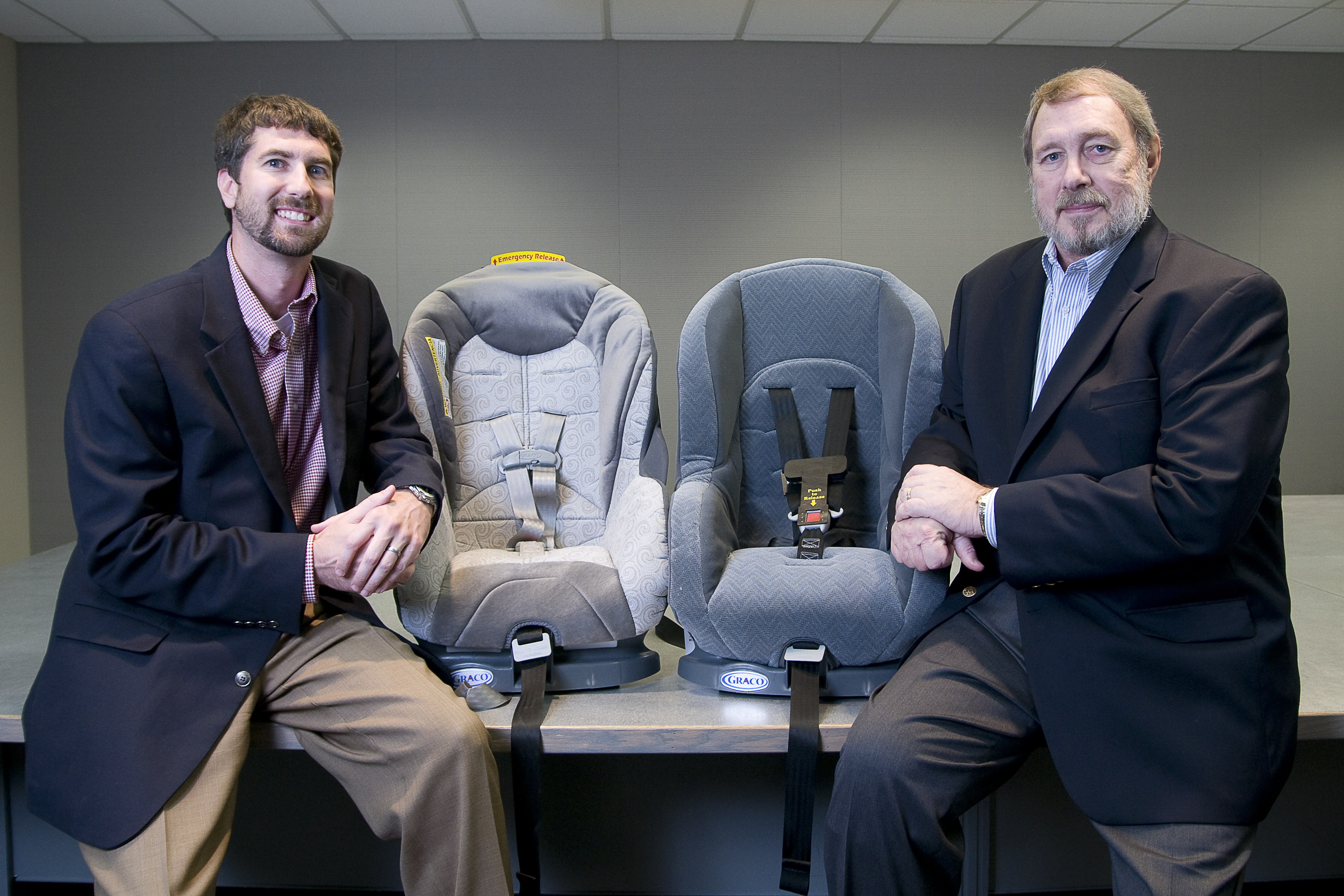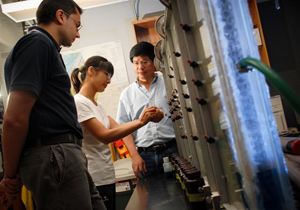
Building a Better Child Safety Seat
A dentist is teaming with two University of Alabama entities in attempts to provide an easy, alternative way to quickly remove a child from a safety seat in an emergency situation.

A dentist is teaming with two University of Alabama entities in attempts to provide an easy, alternative way to quickly remove a child from a safety seat in an emergency situation.

A UA hydrogeologist, who developed a computer model that became the industry standard for predicting movement of groundwater contaminants, is part of a team focusing on the nation’s most contaminated nuclear site.
From chemists to physicists to engineers, researchers throughout The University of Alabama campus are working to develop systems designed to reduce harmful emissions, produce new ways to harness energy, improve efficiency and increase fuel flexibility.
Think, for a second, about the size of a red blood cell. Now, imagine anything that’s about 7,000 times smaller. That would be a nanometer. It’s also representative of the world in which a host of University of Alabama researchers are involved.
Human hearing can only discern the location of a noise to a certain level–beyond that we have to rely on technology. Although having the ability to locate a sound source could be vital for emergency location after a disaster, traditional sensors are too cumbersome and difficult to use in such situations.
One of the world’s most closely monitored experiments recently yielded its initial findings. The results, made public April 11, were made possible, in part, by three University of Alabama scientists who developed one of the primary sets of code used in key portions of the internationally-known effort’s computer analysis.
Researchers at The University of Alabama are offering clues as to why some people appear to have a higher risk of developing Parkinson’s disease following exposure to a widely used chemical weed killer.
From national security issues, to high oil prices, to environmental impacts, reasons for the growing search for alternative energy sources are broad-based. Now, a national security laboratory, with an assist from a University of Alabama engineer, is using what appear to be giant, steel traffic cones to try and turn nuclear fusion into a realistic energy alternative.
Dr. Hideo Fujiwara, a University of Alabama physicist, has sung the praises of the campus’ information storage research center to some of the world’s biggest electronic names, but he can frequently be heard singing a different tune.
Shiny, black magnetic films, about the size of a penny and made by University of Alabama researchers, are central to a discovery of how to conduct resistance-free electricity in a manner previously thought impossible.